A detailed description of how to clean the iron from scale and burn at home and with special tools
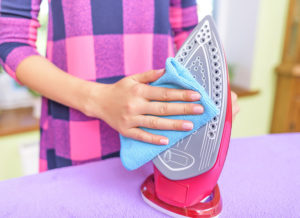 Any iron, regardless of cost and manufacturer, requires careful handling and regular maintenance during operation.
Any iron, regardless of cost and manufacturer, requires careful handling and regular maintenance during operation.
The main reasons for the malfunction of the electrical appliance are the formation of lime deposits and the appearance of soot on the sole.
Scale clogs the steam outlets and leaves white streaks on fabrics during ironing.
Scale formation occurs with the regular use of untreated tap water.
Nagar is formed when the temperature regime is not observed, the device is left on for a long time and synthetic fabrics are overheated. Contamination impairs the sliding of the iron, provokes the appearance of stains and damage on clothes during ironing.
Content
- Carbon deposits on the sole of the iron
- Features of sole materials
- Sole materials
- Cleaning the soleplate with special products
- Cleaning the soleplate of the iron with improvised means
- Descaling inside the iron with a special liquid
- Iron self-cleaning function
- Precautions when cleaning the iron with various products
- Iron Contamination Prevention Measures
- Useful video
Carbon deposits on the sole of the iron
The reasons for the appearance of soot can be very diverse:
- Improper observance of the temperature regime, as a result of which fabric fibers stick to the overheated sole. Most often, carbon deposits form when an overheated device comes into contact with synthetic materials. Burnt fabric forms black spots on the sole.
- When the hot sole comes into contact with buttons and other plastic elements.Under the influence of high temperatures, a small amount of molten plastic sticks to the device.
- Mechanical damage to the sole. Contact with metal parts during ironing and the device falling on a hard surface provoke the appearance of defects on the coating of the sole, as a result of which small particles of fabric, dirt and dust accumulate in the places of damage.
- Incorrect contact with the lining materials is accompanied by the ingress of glue on the sole, which, upon subsequent heating, turns into soot.
- Hard lime water can cause not only scale, but also soot. When exiting through special holes on the sole, small amounts of plaque remain on the sliding surface and burn.
- Accumulation of dust on the surface if not cleaned. The formation of soot occurs when a dirty iron is turned on.
- With improper ironing of things with a print. The contact of a hot iron and a pattern spoils not only the application itself, but also the sole of the appliance, to which dyes adhere.
 Features of sole materials
Features of sole materials
When choosing an iron, special attention is paid to the soleplate, since it is this part of the appliance that is responsible for the effective smoothing and preservation of the fabric.
The main criteria for choosing a sole:
- Uniform sliding. The iron should move freely over the fabric, without feeling obstructed, without requiring much pressure.
- smoothing. The device should easily cope with folds without leaving damage or marks on the fabric.
- Uniform heating. On all surfaces of the sole, the temperature should be the same.
- Strength. It is better to give preference to materials that are resistant to mechanical damage.
- Easy to use.The presence of a non-stick coating will greatly facilitate the use of the iron.
Sole materials
 Ceramics
Ceramics
The sole is not made of pure ceramic, due to the fragility of the material. For the manufacture of ceramic soles, a mixture with the addition of chromium and nickel is used, and steel or aluminum is used as the base. The top layer is covered with pure ceramics, for easier sliding.
Pros:
- good glide;
- smoothing the fabric without creases and folds;
- ease of cleaning;
- affordable price.
Minuses:
- fragility of the material.
 cermet
cermet
The composition can include various alloys, most often stainless steel, which makes the sole more durable compared to ceramic.
Pros:
- ease of sliding, regardless of the structure of the fabric;
- ease of care;
- affordable price.
Minuses:
- susceptibility to mechanical damage.
 Aluminum
Aluminum
Ductile metal has recently been actively used for the manufacture of working surfaces of irons. The main reason for its popularity is the affordable price of the material.
Pros:
- rapid heating and cooling due to the high thermal conductivity of the metal;
- easy slip;
- little weight.
Minuses:
- susceptibility to scratches on the surface;
- lack of a special coating in inexpensive models of irons.
 Stainless steel
Stainless steel
The stainless steel outsole is widely used due to its resistance to damage and the possibility of long-term operation.
Pros:
- good glide;
- immunity to mechanical stress;
- resistance to corrosion;
- uniform heating of the surface.
Minuses:
- heavy weight.
 Teflon
Teflon
Only the top layer of the sole is covered with Teflon, and aluminum or steel is taken as the basis.Teflon non-stick coating provides easy glide and effective smoothing even of chronic creases.
Pros:
- protection of the fabric from the negative effects of high temperatures;
- ease of cleaning;
- good tissue contact.
Minuses:
- instability to scratches leads to a decrease in non-stick properties.
 Composite materials
Composite materials
The composite sole is made from several components with different properties, which gives it greater durability. One of the main advantages is the absence of damage in contact with metal elements.
Pros:
- easy slip;
- high strength;
- resistance to mechanical stress.
Minuses: not detected.
 Titanium
Titanium
The titanium sole appeared relatively recently and combined some of the characteristics of aluminum and stainless steel. The end result is a lightweight and durable product.
Pros:
- uniform heating;
- fast sliding;
- resistance to chemicals;
- resistance to mechanical stress;
- maintaining temperature for a long time.
Minuses:
- high cost of iron.
Cleaning the soleplate with special products
Products for removing dirt from the iron can be purchased at almost any outlet. Special products easily and effectively clean the surface of the sole without damaging the coating.
 Pencil
Pencil
Sole cleaner is a device of small dimensions with a solid structure, which, upon contact with the surface, leaves a mark. The bulk of pencils has in its composition - ammonia, which is the main cleaning ingredient.
Mode of application:
- to heat the iron up to 150 ° C in a vertical position;
- evenly cover the contaminated surface with a pencil, avoiding getting into the steam outlet holes;
- wait until the sole has cooled down;
- remove the product together with a cotton or linen napkin.
Contaminants will disappear along with the melted agent.
 Melamine sponge
Melamine sponge
With the help of sponges, you can remove both fresh and old dirt. The product is multifunctional - it can also be used to clean household appliances or dishes. However, a sponge is not suitable for soles with a non-stick layer, as it can damage the surface.
Mode of application:
- moisten the sponge with water;
- lightly rub the surface until the contamination disappears;
- after cleaning, wipe the soleplate with a dry cloth.
 Sole cleaning mat
Sole cleaning mat
Work surface cleaning mat appeared relatively recently. The product has a small size (slightly larger than the size of an iron), cleaning pile, some models include a special lock to prevent slipping on flat surfaces.
Mode of application:
- place the mat on a table or ironing board;
- with a cold sole of the iron, walk several times along the pile of the rug;
- wipe the cleaned surface with a damp cloth;
- perform self-cleaning with steam.
 Liquid products
Liquid products
Cleaning liquids are selected for each type of coating individually. Therefore, before buying, you need to familiarize yourself with the purpose of the product.
Such solutions cope with various types of pollution, and also cover the surface of the iron with an invisible protective film that prevents the appearance of carbon deposits.
Mode of application:
- Distribute the liquid in an even layer on the surface of the sole;
- Wait for 3 minutes;
- Wipe the surface with a damp cloth and then dry with a dry cloth.
If the deposit cannot be removed the first time, the process can be repeated.
Cleaning the soleplate of the iron with improvised means
In cases where it is not possible to purchase special products, you can use folk cleaning recipes. There are several common compositions with which the sole of the iron will regain its original appearance. However, before using one way or another, you should consider the compatibility of the composition with the type of sole coating.
 soda and salt
soda and salt
Method 1.
A handful of salt should be placed in cheesecloth, folded in several layers and tightly tied. A slightly heated iron should be wiped with gauze until carbon deposits are completely removed.
Method 2.
A smooth surface must be covered with a waffle towel, put salt on top (1 handful is enough) and move a hot iron over it, that is, perform standard ironing. During the cleaning process, the salt will begin to stick together and acquire a dark tint. This is a sign that the cleaning is almost complete.
Method 3.
Soda is mixed with water in a ratio of 2/1, to the consistency of a thick slurry. Next, the composition must be applied to a soft cloth, rub the soot, wait 10 minutes and rub again. After cleaning, the remaining soda must be removed with a dry cloth made of natural fibers.
The water in the composition can be replaced with dish detergent. It should be noted that cleaning with soda is carried out only on a cold surface.
 Toothpaste and toothpowder
Toothpaste and toothpowder
Non-abrasive toothpaste and toothpowder are suitable for all iron surfaces. Means perfectly clean the sole, while leaving no damage.
Toothpaste or powder is applied to the dirt and with a toothbrush, clean the surface until the carbon deposits are completely removed. After cleaning, the sole is wiped with a damp and then dry cloth.
There is another way: the contamination is covered with a layer of toothpaste, the iron is heated, and then the paste is removed along with the contamination.
Hydrogen peroxide
In order to remove old soot from the sole, you should take a small piece of cloth or cotton wool, moisten it with a 3% hydrogen peroxide solution, and wipe the problem areas. The iron must be cold during processing. This method removes even hopeless contamination.
 Acetone and nail polish remover
Acetone and nail polish remover
With the help of acetone or nail polish remover, you can get rid of not only carbon deposits, but also melted polyethylene adhering to the sole. For cleaning, nail polish remover, marked "acetone free" is also suitable.
To remove dirt, you need to take a piece of cotton wool or any natural cloth, soak it in liquid and wipe the contaminated areas.
 Vinegar
Vinegar
There are many options for removing carbon deposits with acetic acid. Anyway, for the procedure, you must choose a well-ventilated roomto avoid the negative effects of vinegar vapor and an unpleasant pungent odor.
Option 1
- stir 2 tablespoons in a glass of water. vinegar;
- moisten a cotton swab or a piece of natural fiber cloth with the resulting solution;
- wipe the heated sole with a solution.
Option 2
- soak a piece of fabric with table vinegar;
- place the iron on the fabric in a horizontal position, leave overnight;
- in the morning wash the surface with soap and then with clean water;
- wipe with a dry cloth.
 Ammonia
Ammonia
Cleaning with ammonia should also be carried out in a room with good ventilation.
Method 1
- heat up the iron;
- wet an unnecessary cloth or napkin with ammonia;
- spread out on a smooth surface;
- iron with an iron, pressing the sole on the fabric;
- continue the procedure until the complete removal of soot.
Method 2
- apply ammonia to the problem areas of the cold sole;
- leave until the morning;
- In the morning, wipe the sole with a dry cloth.
 Laundry soap
Laundry soap
With the help of laundry soap, only minor fresh dirt can be removed. This tool is not suitable for removing old soot.
Mode of application:
- wipe the sole with a damp cloth, wipe dry;
- 1 tbsp dissolve soap shavings in a small amount of warm water;
- apply the resulting mixture to a slightly heated sole;
- leave for 20 minutes, until the sole has completely cooled;
- Rinse off the hardened soapy mass with a wet sponge.
Nagar is removed along with the hardened soap mass.
 Paraffin
Paraffin
The work surface, on which the remnants of the product will drain, must be covered with newspaper or other unnecessary material. During the cleaning process, care must be taken to ensure that the steam holes and relief elements are not clogged with paraffin. If the agent does get into the recesses, it must be removed in order to avoid damage to clothes during ironing.
Mode of application:
- wrap the paraffin candle with a cloth to make it easier to hold;
- heat the sole to the maximum;
- walk on the surface with the tip of a candle;
- wait for the sole to cool completely;
- carefully remove the hardened paraffin, wipe the surface with a cloth.
 Descaling inside the iron with a special liquid
Descaling inside the iron with a special liquid
German-made products are considered the most effective descaling products. Special chemical cleaners contain organic elements and substances that resist corrosion.
Mode of application:
- prepare a solution of 3 parts of water and 1 part of a cleaner;
- pour the resulting solution into the tank;
- heat the iron to the maximum temperature;
- turn off the iron, place it on a stand in a horizontal position;
- leave for a certain time indicated in the instructions (depending on the type of product and the desired effect, the time can vary from 10 minutes to 2 hours);
- pour out the liquid, rinse the iron with filtered water several times, using the steam release button;
- after all the scale has come out of the iron, wipe the surface with a dry cloth.
- Before ironing, check the cleanliness of the iron by ejecting steam.
 Iron self-cleaning function
Iron self-cleaning function
Self cleaning of the iron or "self clean" is designed to automatically remove internal dirt and limescale. The self clean button is most often found next to the steam button, but each model has a different location. First of all, you need to read the instructions for the iron.
How to use the function:
- make a solution of 50% distilled water and pour into the liquid compartment;
- set the temperature to maximum, turn on the device;
- prepare a container for the exit of contaminated liquid from the iron;
- after the temperature reaches the maximum, turn off the iron and press the self-cleaning button;
- so that the dirt is better separated from the walls of the device, you need to periodically shake the iron;
- During the cleaning process, intense heating of the sole occurs, so you should be as careful as possible.
Certain models have anti-limestone rods, which are treated separately by soaking in a special agent. Soaking time - up to 5 hours. After the time has elapsed, the parts are washed with clean running water.
 Precautions when cleaning the iron with various products
Precautions when cleaning the iron with various products
Carbon cleaning
- Do not immerse the iron in water or other liquid.
- During the cleaning process, the iron should only be held in an upright position.
- If the cleaning process requires a long time, it is better to place the device on a damp cloth.
- It is strictly forbidden to get cleaners into the steam outlets, as the liquid can cause a short circuit in the wires.
Descaling
During the descaling process, the soleplate is strongly heated, and the surface cooling process takes a long time. Therefore, it is forbidden to touch the soles with your hands, to avoid burns.
 Iron Contamination Prevention Measures
Iron Contamination Prevention Measures
- After finishing ironing, always empty the water from the compartment.
- Remove dirt from the surface of the sole in time.
- Hard water is recommended to be diluted with distilled water in a ratio of 1/1.
- Clean the steam outlets in time with a special tool.
- Clean your iron monthly.
- Choose the right temperature for each type of fabric.
- Iron only clean clothes, as dust from worn fabrics can get into the holes and scratch the surface.
- Woolen items should only be ironed through damp gauze.
- Wipe the surface of the sole with a dry cloth every time after finishing work.
- Read the instructions carefully after purchasing the appliance.
Useful video
In this video you will learn how to clean the iron at home:



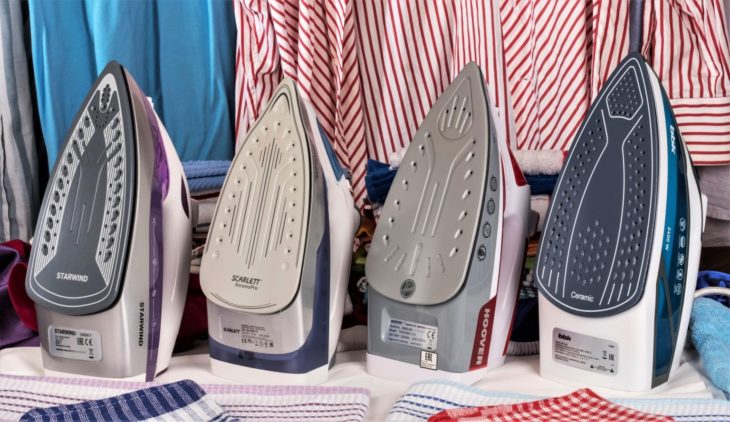 Features of sole materials
Features of sole materials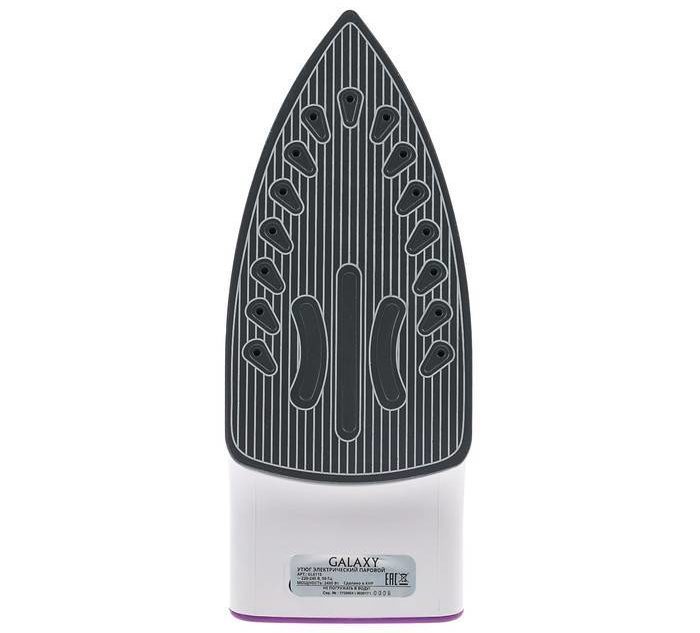 Ceramics
Ceramics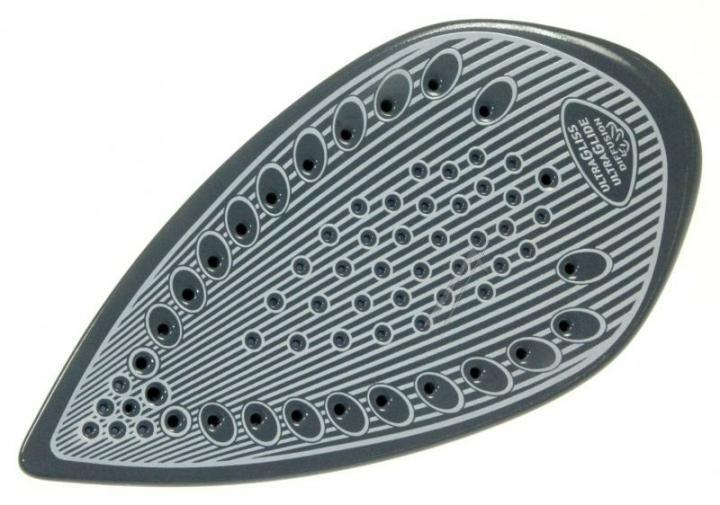 cermet
cermet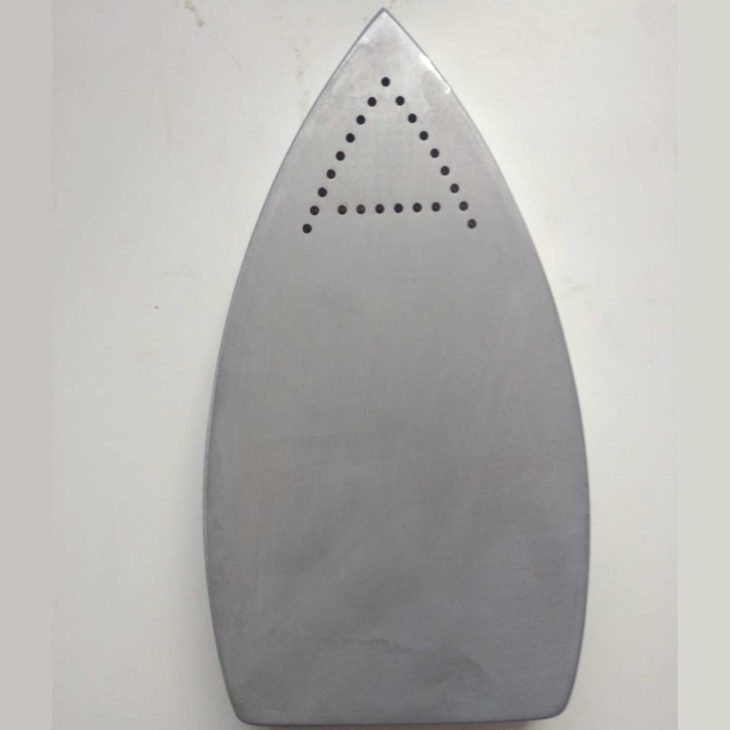 Aluminum
Aluminum Stainless steel
Stainless steel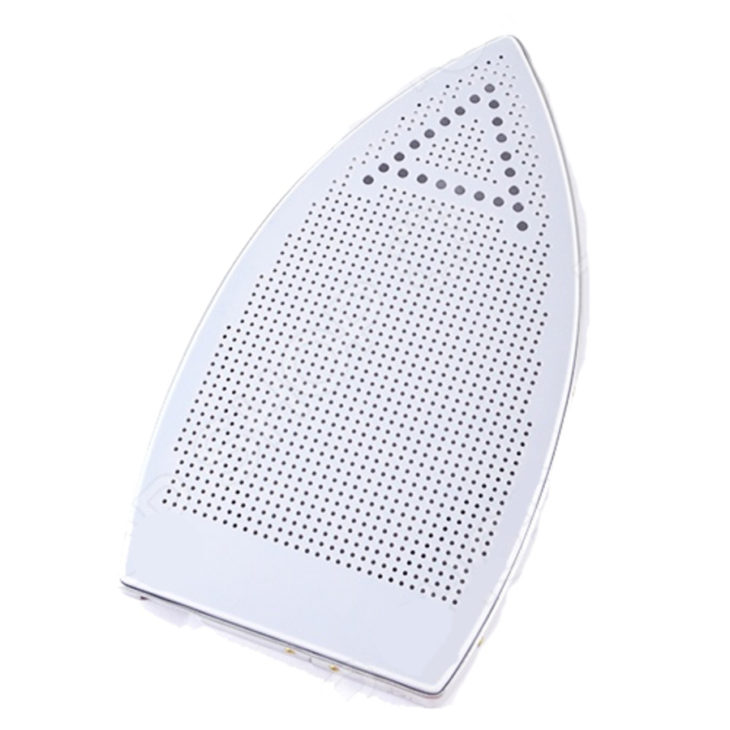 Teflon
Teflon Composite materials
Composite materials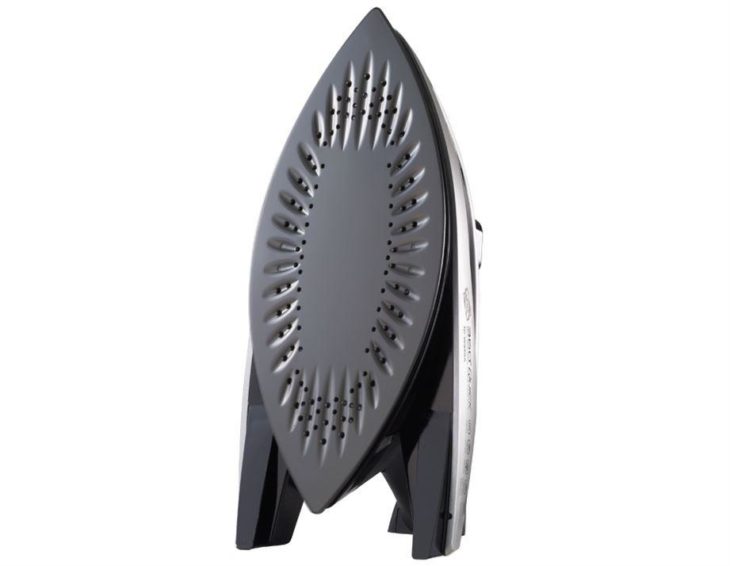 Titanium
Titanium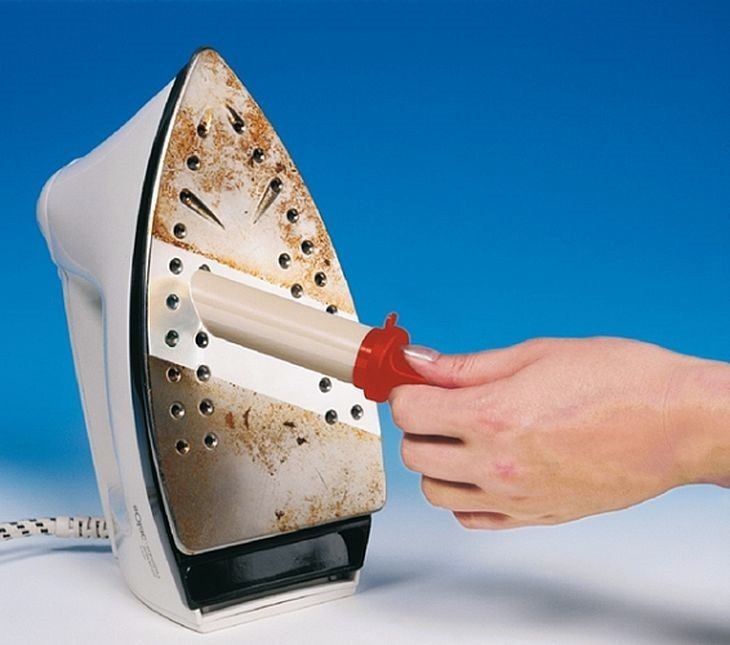 Pencil
Pencil Melamine sponge
Melamine sponge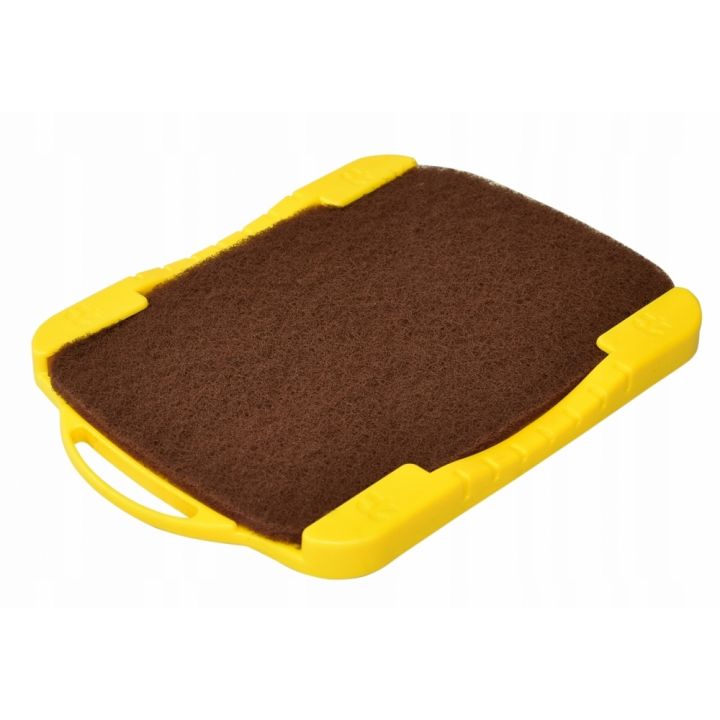 Sole cleaning mat
Sole cleaning mat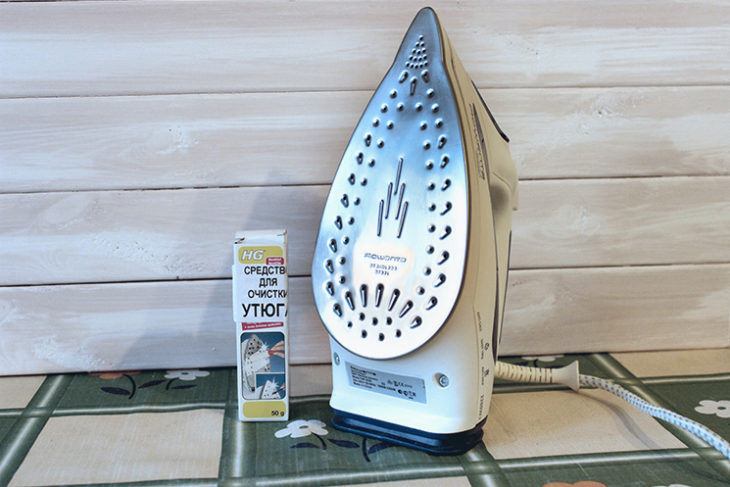 Liquid products
Liquid products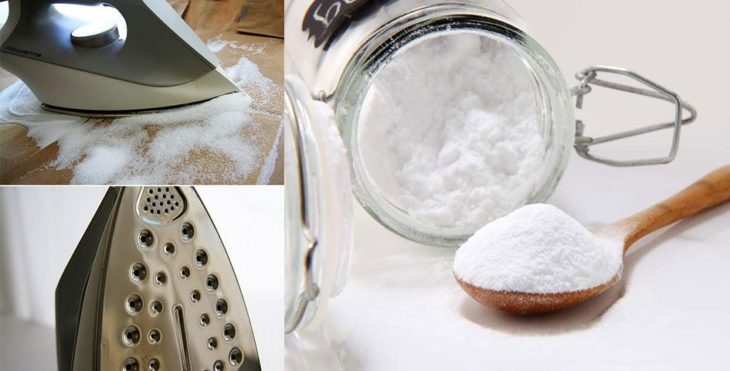 soda and salt
soda and salt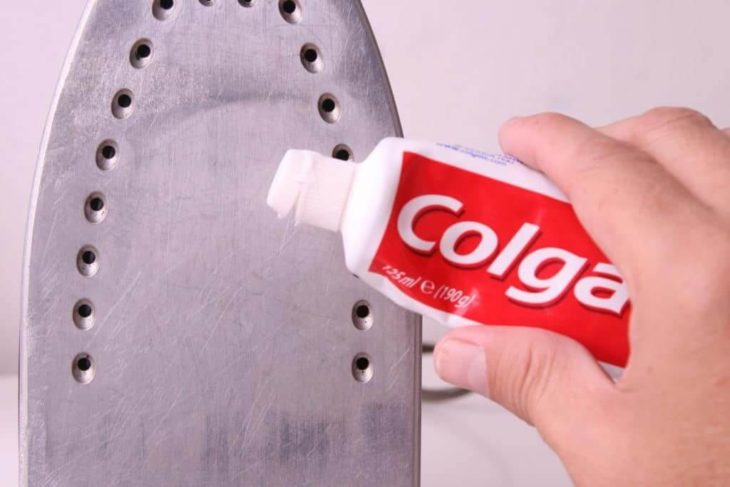 Toothpaste and toothpowder
Toothpaste and toothpowder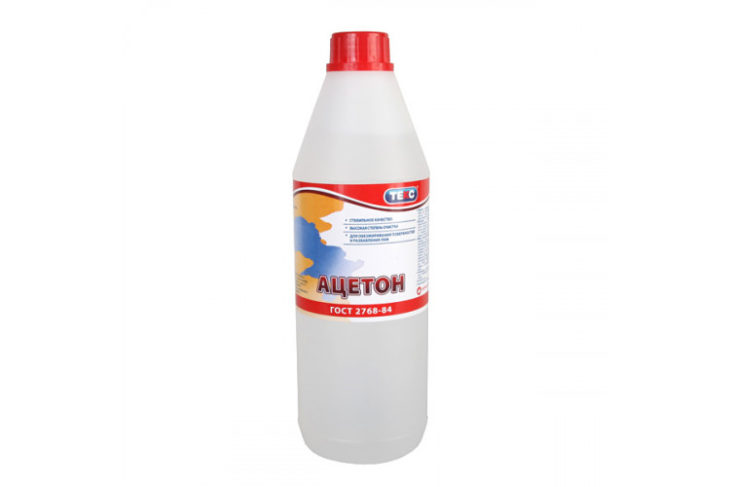 Acetone and nail polish remover
Acetone and nail polish remover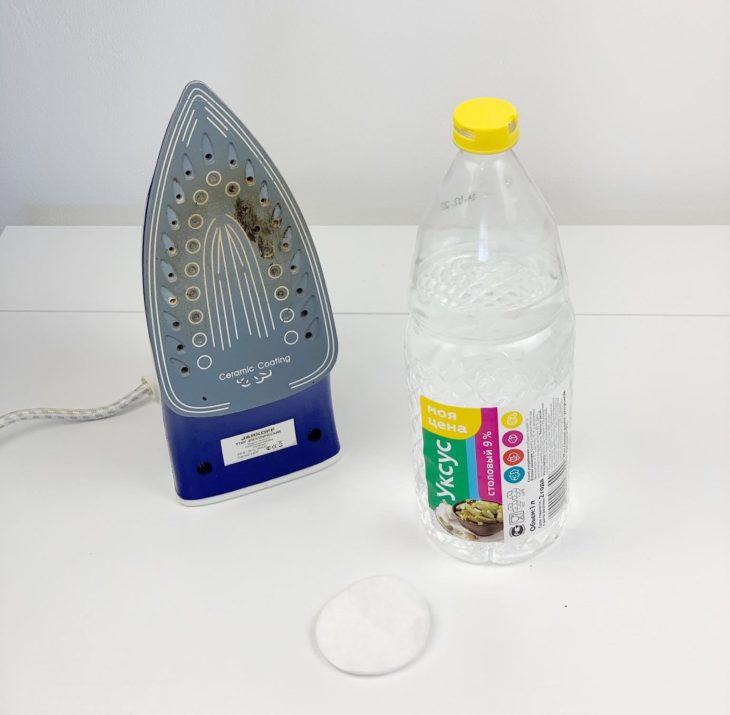 Vinegar
Vinegar Ammonia
Ammonia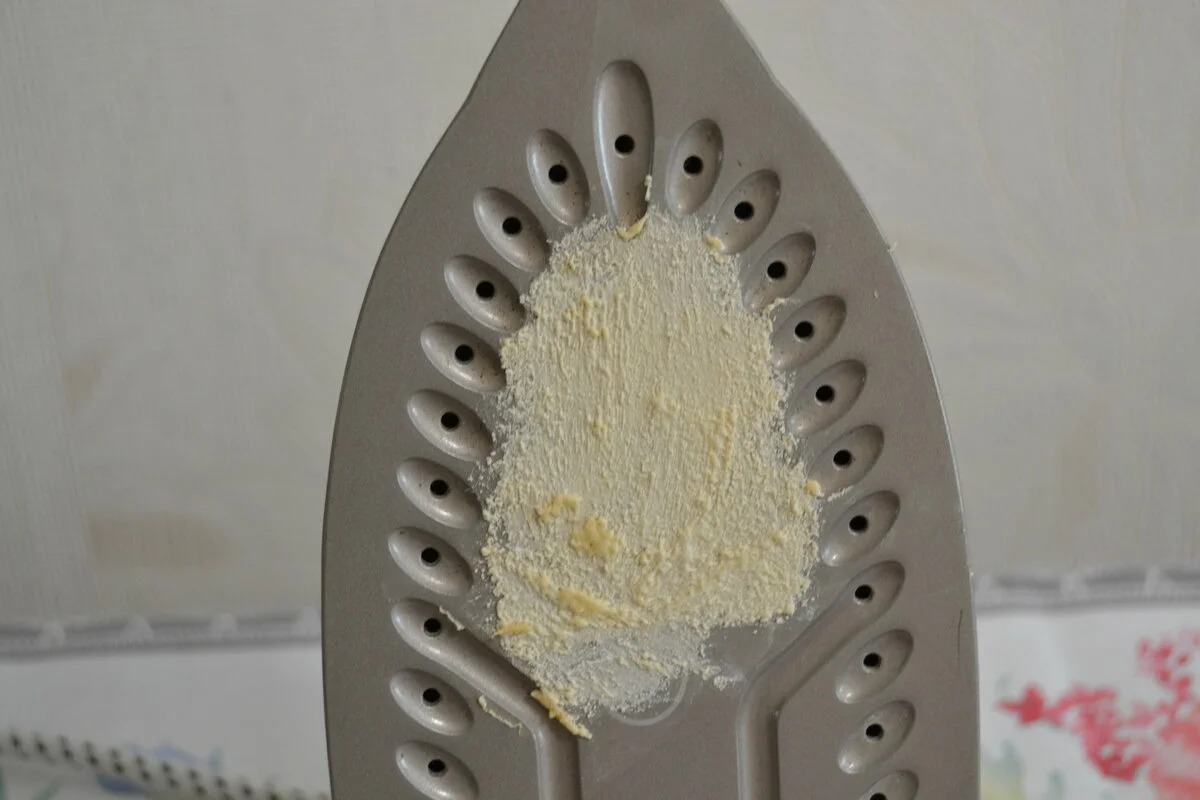 Laundry soap
Laundry soap Paraffin
Paraffin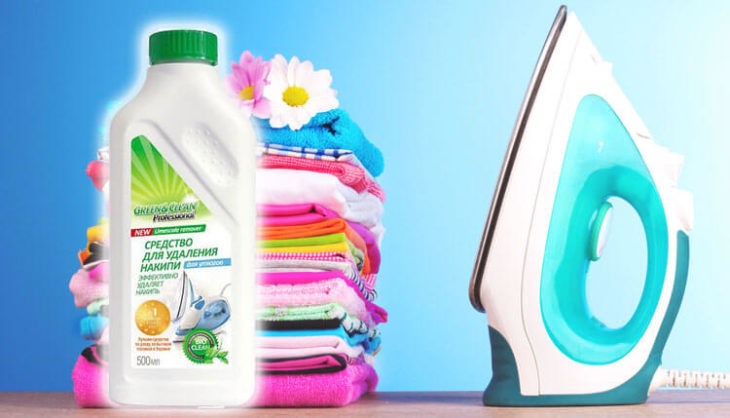 Descaling inside the iron with a special liquid
Descaling inside the iron with a special liquid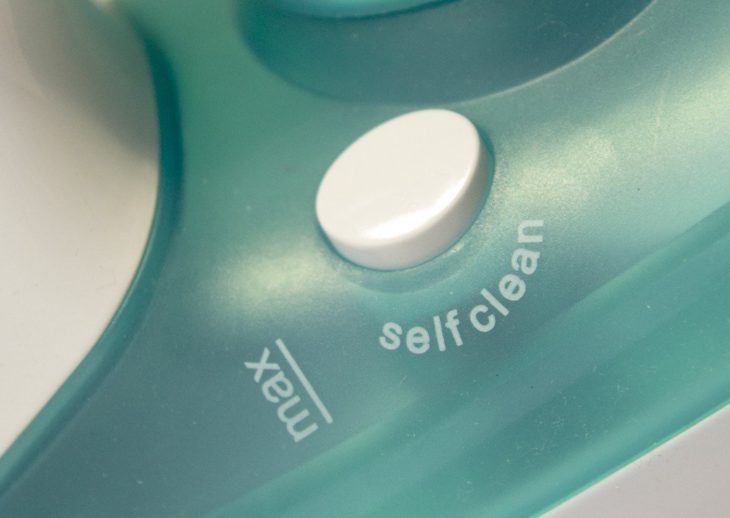 Iron self-cleaning function
Iron self-cleaning function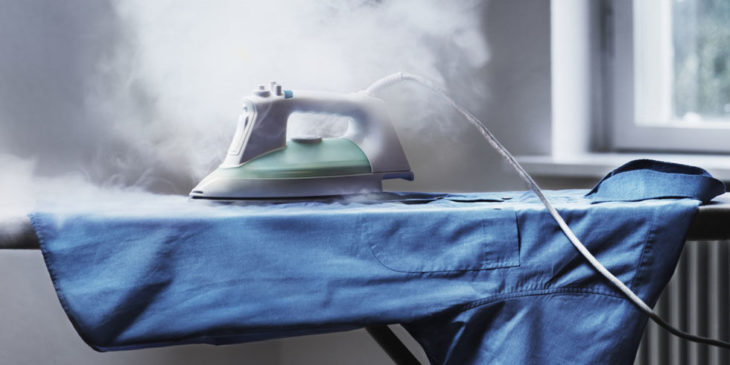 Precautions when cleaning the iron with various products
Precautions when cleaning the iron with various products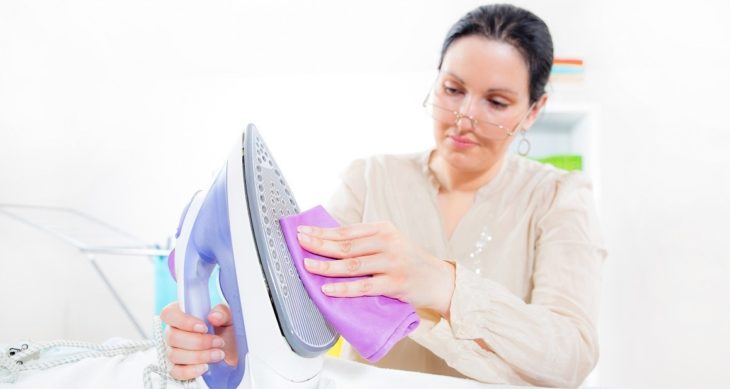 Iron Contamination Prevention Measures
Iron Contamination Prevention Measures